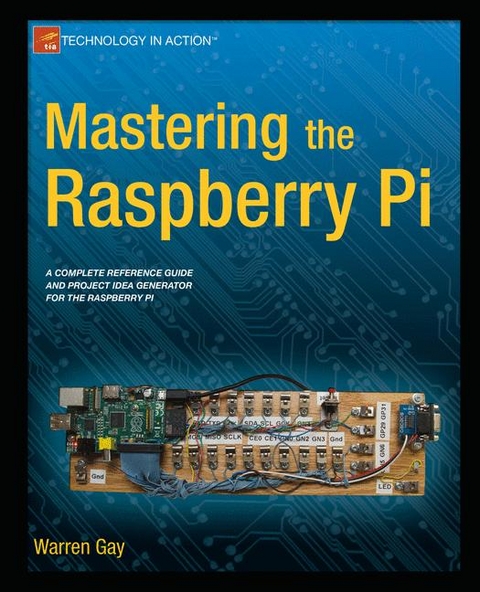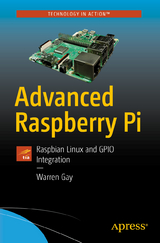
Mastering the Raspberry Pi
Apress (Verlag)
978-1-4842-0182-4 (ISBN)
- Titel erscheint in neuer Auflage
- Artikel merken
If you want to get right into the pro-level guts of the Raspberry Pi, complete with schematics, detailed hardware explanations, messing around with runlevels, reporting voltages and temperatures, and recompiling the kernel, then Mastering the Raspberry Pi is just the book you need. Along with all of the thorough explanations of hardware and operating system, you'll also get a variety of project examples and explanations that you can tune for your own project ideas.
You'll find yourself turning to Mastering the Raspberry Pi over and over again for both inspiration and reference. Whether you're an electronics professional, an entrepreneurial maker, or just looking for more detailed information on the Raspberry Pi, this is exactly the book for you.
Warren Gay has been an electronics enthusiast since childhood and often dragged discarded TV sets home after school. In high school he learned to program the IBM-1130 and then pursued a career in software development at Ryerson Polytechnical, in Toronto. Since then he has worked professionally for over 30 years, mainly in C/C++, under Unix and Linux. Meanwhile, the love of electronics has never faded since the early creation of his home-brewed Intel 8008 system in the 70's to the present day projects employing the Raspberry Pi. Warren also holds an advanced amateur radio license and was able to work the Mir space station (U2MIR) using packet radio in August 1991.He's authored other books including Sams Teach Yourself Linux in 24 Hours, Linux Socket Programming by Example, and Advanced Unix Programming.
Part I: Introduction
Ch. 1 - Why This Book?
Ch. 2 - The Raspberry Pi
Ch. 3 – Preparation: Hardware and Network
Part II: Hardware
Ch. 4 – Figuring Out Power Requirements
Ch. 5 - Header Strips, LEDs, and Reset
Ch. 6 – Working with Memory
Ch. 7 – The CPU and Working with Threads
Ch. 8 – USB Power and API Support
Ch. 9 – Working with Wired and Wireless Ethernet
Ch. 10 - SD Card Storage
Ch. 11 – Serial Communication
Ch. 12 – GPIO: Your Interface to the Outside World
Ch. 13 - 1-Wire Driver
Ch. 14 - I2C Bus: The Two Wire Interface
Ch. 15 - SPI Bus: Signaling, API, and Testing
Part III: Software
Ch. 16 – Booting ARM Linux
Ch. 17 – Initialization: Working with Runlevels
Ch. 18 – vcgencmd: Reporting Voltages and Temperatures
Ch. 19 - Linux Console
Ch. 20 – Building a Cross-Compiler
Ch. 21 – Cross-Compiling the Kernel
Part IV: Projects
Ch. 22 – Humidity and Temperature Sensor
Ch. 23 - GPIO Extender
Ch. 24 - Nunchuk Mouse
Ch. 25 - Real-Time Clock
Ch. 26 - IR Receiver
Ch. 27 - Stepper Motor
Ch. 28 - The H-Bridge Driver
Ch. 29 - Remote Control Panel
Ch. 30 - Pulse Width Modulation: Driving an Analog Meter
Appendices:
A. Glossary
B. Power Standards
C. Electronics Reference
D. Raspbian apt Commands
E. ARM Compile Options
F. Mac OS X Tips
G. Bibliography
| Zusatzinfo | 97 Illustrations, black and white; XXVIII, 504 p. 97 illus. |
|---|---|
| Verlagsort | Berkley |
| Sprache | englisch |
| Maße | 178 x 254 mm |
| Gewicht | 9297 g |
| Themenwelt | Informatik ► Theorie / Studium ► Künstliche Intelligenz / Robotik |
| Informatik ► Weitere Themen ► Hardware | |
| Schlagworte | Raspberry Pi; Einführung |
| ISBN-10 | 1-4842-0182-5 / 1484201825 |
| ISBN-13 | 978-1-4842-0182-4 / 9781484201824 |
| Zustand | Neuware |
| Haben Sie eine Frage zum Produkt? |
aus dem Bereich



